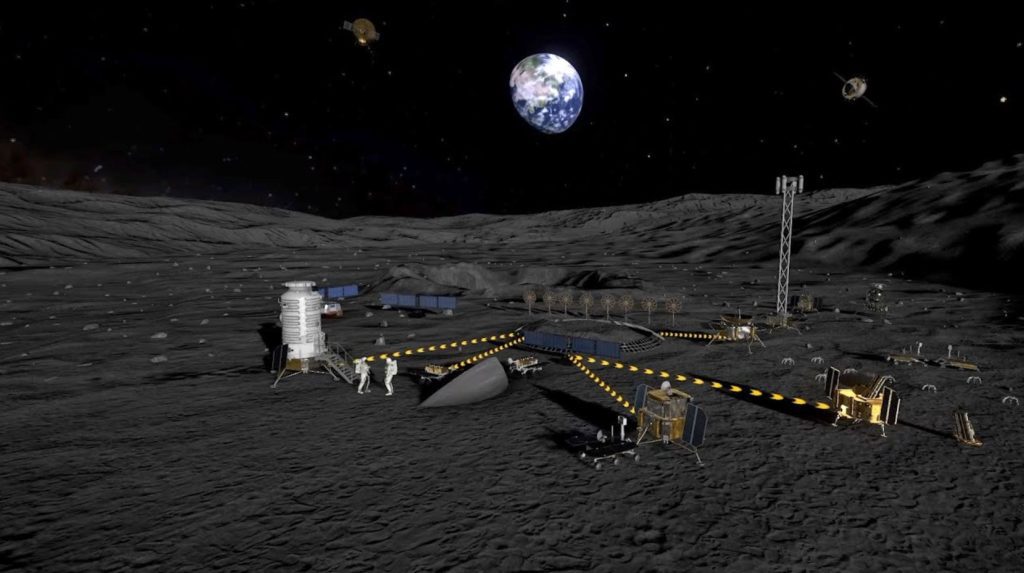China is on track to achieve its goal of sending its astronauts to the moon by the end of the 2020s, as stated by the country's human spaceflight agency.
Officials from the China Manned Space Engineering Office (CMSEO) shared an update on the crewed lunar program during a press conference at Jiuquan spaceport on April 24.
Lin Xiqiang, deputy director of CMSEO, mentioned that the development of major flight products for the lunar program, such as the Long March 10 rocket, the Mengzhou crew spacecraft, the Lanyue lunar lander, and the lunar landing suits, has been completed, with prototype production and testing in progress.
Chinese authorities previously announced their plan to land two astronauts on the moon before 2030. Two lunar variant rockets, Long March 10, will separately launch Mengzhou and three astronauts, as well as the Lanyue lander. The astronauts will carry out a lunar orbit rendezvous and docking before descending to the lunar surface. After spending six hours on the moon, they will rejoin their colleague in lunar orbit and return to Earth. “The development of mechanical and thermal test products for the crew spacecraft and lander have been basically completed. Various rocket engines are undergoing hotfire tests,” Lin stated.
In addition, new launch infrastructure is being constructed near China’s existing coastal spaceport at Wenchang, Hainan island to support the missions. Moreover, astronaut training for the mission includes mastering the operation of the Mengzhou and Lanyue spacecraft, including in normal and emergency flight conditions. The training also covers rendezvous and docking, manually avoiding obstacles during the lander’s descent, entering and exiting the lander, working in one-sixth of Earth’s gravity, long-range lunar roving, drilling, sampling, and other scientific work on the lunar surface.The crewed lunar landing mission is part of China’s wider plans to set up a robotic and eventually inhabited moon base, known as the International Lunar Research Station (ILRS).
A new launch site is being built near China’s existing coastal spaceport at Wenchang, Hainan island to support the missions.
Furthermore, proposals for a “crew lunar rover and lunar surface payloads solicited from the public are under selection,” Lin stated. CMSA announced a call for proposals for a lunar crew rover, potentially using a commercial development model, in May 2023.
Lin emphasized that a human lunar landing is a challenging and innovative scientific and technological project. He mentioned that efforts will be made to make progress with the development and manufacturing in a coordinated way to meet the mission's schedule.
The U.S. is also working on sending humans back to the moon with the Artemis 3 mission. However, a report by the Government Accountability Office in December 2023 concluded that the mission is unlikely to occur before 2027.
Lin stressed that a human lunar landing is a challenging and innovative scientific and technological project. He mentioned that efforts will be made to make progress with the development and manufacturing in a coordinated way to meet the mission's schedule.
China's crewed lunar landing mission is part of its broader plans to establish a robotic and eventually inhabited moon base, known as the International Lunar Research Station (ILRS). The U.S. is also working on sending humans back to the moon with the Artemis 3 mission. However, a report by the Government Accountability Office in December 2023 concluded that the mission is unlikely to occur before 2027. The U.S. is also working on sending humans back to the moon with the Artemis 3 mission. However, a report by the Government Accountability Office in December 2023 concluded that the mission is unlikely to occur before 2027. The U.S. is also working on sending humans back to the moon with the Artemis 3 mission. However, a report by the Government Accountability Office in December 2023 concluded that the mission is unlikely to occur before 2027..
The CMSEO press eventThe event occurred on China’s national space day and its main purpose was to introduce the crew for the Shenzhou-18 mission. This mission is scheduled to launch at 8:59 a.m. (1259 UTC) on April 25 and is expected to reach the Tiangong space station about 6.5 hours later.
Ye Guangfu, who has experience from the 2021 Shenzhou-13 mission, will command the crew. The rest of the crew will consist of former PLA Air Force pilots Li Guangsu and Li Cong, who will be going on their first spaceflight missions.









